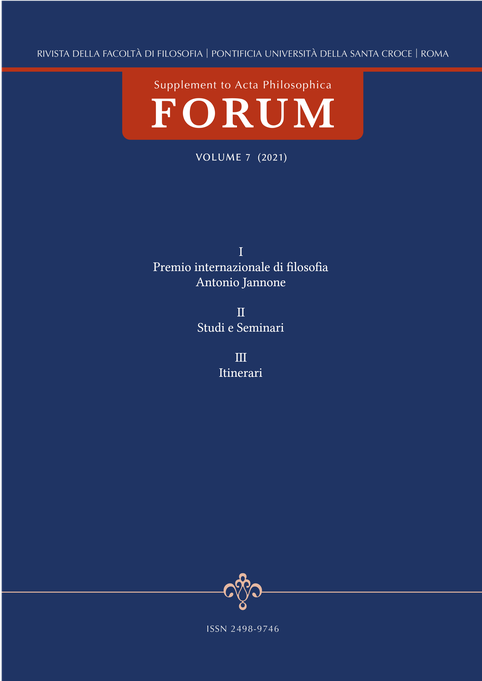The analogical method in Aristotle's De anima. Commentary on Chapter One of Book One
DOI:
https://doi.org/10.17421/2498-9746-07-05Keywords:
Aristotle, soul, body, life, being, method, analogy, passionAbstract
The article collects the commentary on the first chapter of the first book of Aristotle's De anima. This is a partial publication of a full comment to be published shortly. In this first chapter, starting from the distinction between living and non-living, Aristotle presupposes the existence of the soul. His research is therefore aimed not so much at demonstrating its existence, as at discovering which are the actions proper to every living thing and which, instead, serve to distinguish the different types of life, in order to arrive at a definition of the soul valid for all living beings. To achieve this goal, the Stagirita uses a diversity of methods such as the historical, critical, inductive, entinemic and, above all, the analogue one. Thus, in dealing with the passions, alongside the empirical and deductive methods, respectively typical of the physicist, or naturalist, and of the dialectical philosopher, Aristotle employs analogy, which allows him to have a transdisciplinary vision avant la lettre.



